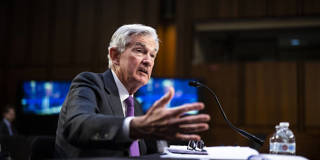If the US Federal Reserve raises its policy interest rate by as much as is necessary to rein in inflation, it will most likely further depress the market value of the long-duration securities parked on many banks' balance sheets. So be it.
NEW YORK – When a market liquidity and/or funding liquidity crisis occurs at a moment when inflation is above-target, tension between the objectives of central banks – price stability and financial stability – is inevitable. In such cases, I believe that financial stability must come first, because it is a precondition for the effective pursuit of price stability.
But this does not mean that the central bank should cease or suspend its anti-inflationary policies when threatened with a banking crisis or similar systemic stability risk. The conflict between the objectives of price stability and financial stability should be manageable by using the central bank’s policy rate to target inflation, and by using the size and composition of its balance sheet as a macroprudential policy tool to target financial stability. Credible communication is essential to achieve both objectives.
Financial stability in a large advanced economy is not materially impacted by a 50-basis-point increase in the risk-free short nominal rate of interest. It is impacted by the interrelated liquidity and credit risk premia and the vanishing would-be purchasers and lenders in illiquid financial markets – when credit rationing rules the roost. The Bank of England got this right last year when, during a period of monetary-policy tightening brought on by then-Prime Minister Liz Truss’s incoherent policies, it engaged in temporary purchases of long-dated UK government bonds and postponed quantitative tightening through Asset Purchase Facility gilt sales.

NEW YORK – When a market liquidity and/or funding liquidity crisis occurs at a moment when inflation is above-target, tension between the objectives of central banks – price stability and financial stability – is inevitable. In such cases, I believe that financial stability must come first, because it is a precondition for the effective pursuit of price stability.
But this does not mean that the central bank should cease or suspend its anti-inflationary policies when threatened with a banking crisis or similar systemic stability risk. The conflict between the objectives of price stability and financial stability should be manageable by using the central bank’s policy rate to target inflation, and by using the size and composition of its balance sheet as a macroprudential policy tool to target financial stability. Credible communication is essential to achieve both objectives.
Financial stability in a large advanced economy is not materially impacted by a 50-basis-point increase in the risk-free short nominal rate of interest. It is impacted by the interrelated liquidity and credit risk premia and the vanishing would-be purchasers and lenders in illiquid financial markets – when credit rationing rules the roost. The Bank of England got this right last year when, during a period of monetary-policy tightening brought on by then-Prime Minister Liz Truss’s incoherent policies, it engaged in temporary purchases of long-dated UK government bonds and postponed quantitative tightening through Asset Purchase Facility gilt sales.